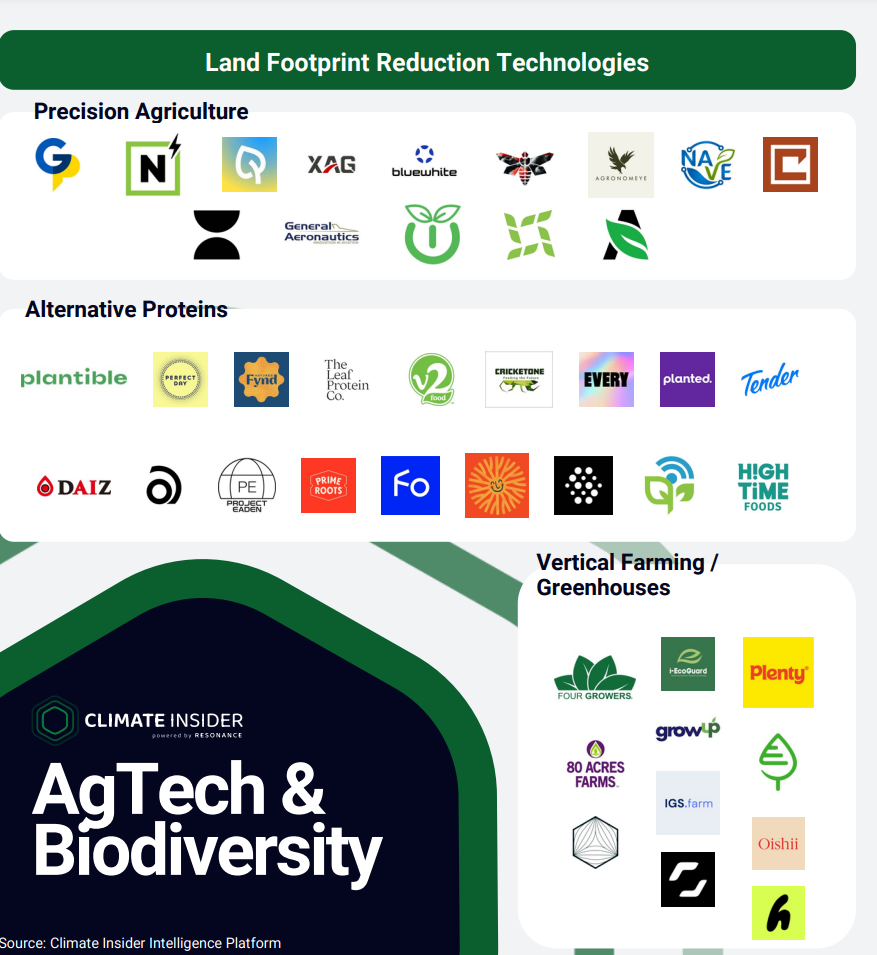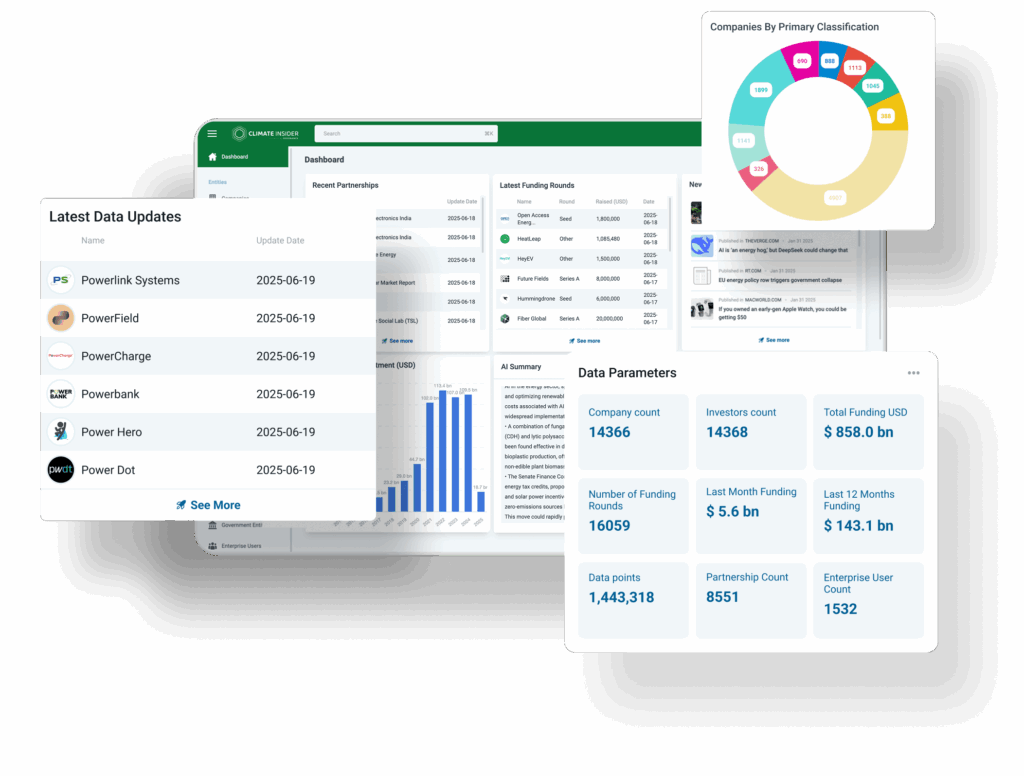Insider Brief:
- Biodiversity is in alarming decline worldwide – since 1970, global wildlife populations have plummeted by 69%, according to the WWF.
- Pollinator decline poses a major risk to the agricultural sector, as around 75% of global food crops depend on pollinators.
- New AgTech companies have been developed to both maximize farm yields and improve biodiversity, and Climate Insider has insights on how companies can use these technologies to flourish. Click here to download the full market map.
Biodiversity is declining at a rapid pace, and all industries -particularly those which have played a significant role in this decline – need to embrace technologies which curtail this harm.
Biodiversity is in alarming decline worldwide. Since 1970, global wildlife populations have plummeted by an average of 69%, according to the WWF’s Living Planet Report. Habitat destruction, pollution, and climate change are accelerating species loss at an unprecedented rate, an important fact to acknowledge especially on International Day for Biological Diversity (May 22).

Pollinator decline poses a major risk to food security. Around 75% of global food crops depend on pollinators, and their loss jeopardizes up to $577 billion in annual crop production.
But the industry can make positive inroads to restoring biodiversity, while also embracing nature-positive models – a move that could create US$10 trillion in opportunities by 2030.
At Climate Insider, we’ve developed a market map to assist agricultural firms in navigating these new technologies.
Alternative protein technologies
Alternative protein technologies, with its current market of US$17.7 billion, includes plant-based meats, lab-grown proteins, and insect-based feeds. These technologies enable agricultural businesses to diversify their offerings and tap into rapidly growing markets focused on sustainability and health. By reducing reliance on traditional livestock farming, these innovations lower land use, greenhouse gas emissions, and water consumption. This shift helps preserve natural habitats and reduces pressure on ecosystems, ultimately supporting higher biodiversity levels while creating new, future-focused revenue streams.
Precision agriculture
Precision agriculture uses data-driven technologies—such as GPS mapping, sensors, drones, and AI—to optimize farming practices, increase yields, and reduce waste. Valued at over $10 billion in 2023, the global precision agriculture market is expected to surpass $20 billion by 2030. Agricultural companies can seize this opportunity by investing in smart tools and services that boost efficiency and sustainability. Precision agriculture also improves biodiversity by minimizing chemical use, preserving soil health, and reducing habitat disruption.
Vertical farming
Vertical farming is the practice of growing crops in vertically stacked layers within controlled environments, often utilizing soilless techniques like hydroponics and aeroponics. This method enables year-round production with significantly higher yields per square foot compared to traditional farming. In 2025, the global vertical farming market is projected to be valued at approximately US$8.52 billion, with expectations to reach US$50.10 billion by 2032.
Agricultural companies can capitalize on vertical farming by investing in urban-centric, resource-efficient food production systems that reduce transportation costs and meet the growing demand for fresh, pesticide-free produce. By minimizing land use and eliminating the need for deforestation, vertical farming helps preserve natural habitats and supports biodiversity. Additionally, its reduced reliance on chemical inputs and controlled environments mitigate the impact on surrounding ecosystems, promoting a more sustainable agricultural model.
Regenerative agriculture
Regenerative agriculture is a holistic farming approach that aims to restore and enhance soil health, increase biodiversity, and improve ecosystem resilience. It encompasses practices such as cover cropping, reduced tillage, composting, and rotational grazing, all designed to work in harmony with nature.
The global regenerative agriculture market is experiencing significant growth. The sector is estimated to generate as much as US$11.98 billion in 2025, with expectations to grow to $29.0 billion by 2033.
Agricultural companies can seize opportunities in this expanding market by adopting regenerative practices that not only enhance soil fertility and water retention but also reduce reliance on synthetic inputs. These practices support biodiversity by creating habitats for various species, promoting pollinator health, and fostering resilient ecosystems. By aligning with regenerative agriculture principles, businesses can meet the increasing consumer demand for sustainably produced food while contributing to environmental conservation.
Supply chain optimization
Supply chain optimization in agriculture involves using data, technology, and streamlined logistics to enhance efficiency, reduce waste, and improve traceability from farm to market. By aligning supply chains with regenerative agriculture practices—such as sourcing from farms that build soil health and protect ecosystems—agricultural companies can reduce their environmental footprint. This strategy supports biodiversity by promoting land stewardship and encouraging sustainable farming networks, while also appealing to eco-conscious consumers and improving long-term resilience.
This Market Map provides organizations with a strategic blueprint for navigating the complex world of AgTech. It helps identify where innovation is accelerating, where systemic bottlenecks and underinvestment persist, and how companies can adapt to integrate and scale better technologies to achieve higher agricultural output while protecting biodiversity. The result is a more holistic understanding of the overall AgTech market, as well as where its greatest opportunities and risks lies across the AgTech industry.
Summary
As the Climate Tech sector grows more complex and interconnected, enterprises require clear frameworks and unambiguous market intelligence to guide business decisions. Climate Insider offers both research and advisory support to help organizations navigate choices around climate technology as well as how to implement and scale these technologies. Climate Insider also offers support in identifying strategic opportunities and managing risk.
Our mission is to deliver the data and insight that organizations need to adopt and scale climate solutions with confidence.
Click here to download the full market map.
For more information, or to connect with our analysts, contact us directly at [email protected].








